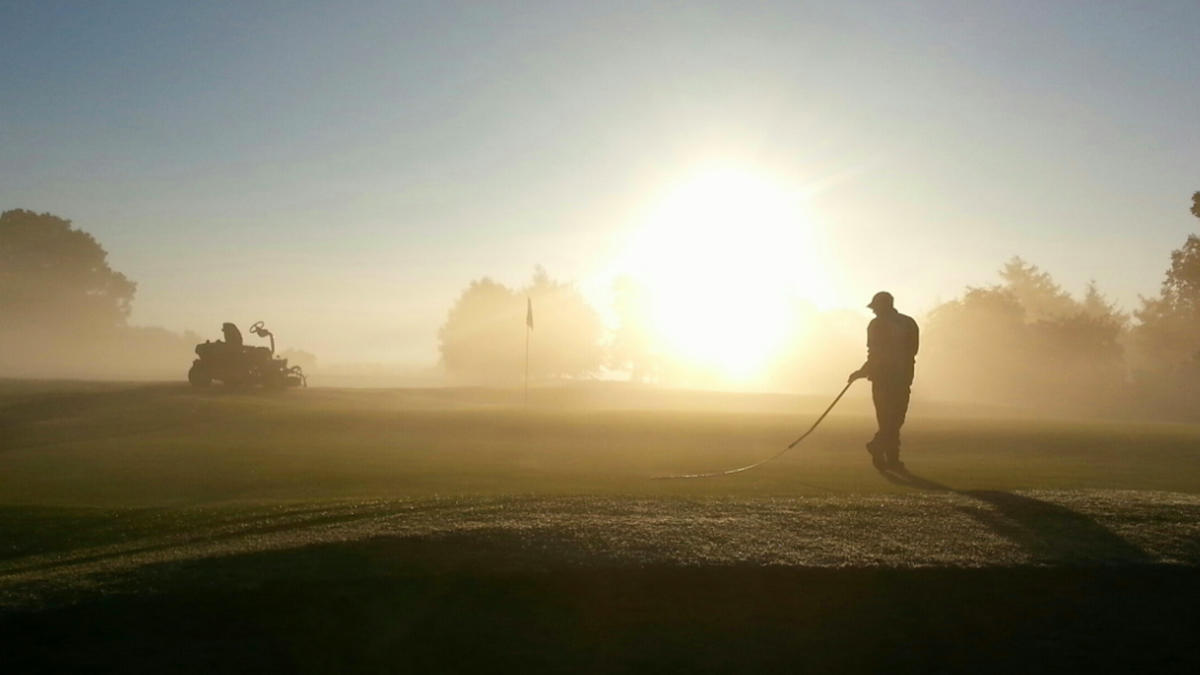- Homepage
- News and Features
- Essential maintenance update - 12 May
Essential maintenance update - 12 May

Image by John Parry, Wrexham
Introduction to Update
The following update (Version 3) to the Essential Maintenance Statement for Golf Courses has been produced in association with BIGGA and is published in view of alteration to Government regulations in England and Wales.
Safe Routine Maintenance Practices can be Restored in England and Wales
Alterations to Government regulations in England and Wales mean golf clubs are re-opening. Consequently, routine maintenance practices can be restored in England and Wales, providing safe working practices are in place and all golf facilities implement stringent measures to ensure staff members are not at risk. The number of greenkeeping staff and the amount of time they spend at work should be tailored to fit with safe working practices. These include but are not limited to:
- Focus on hygiene and social distancing
- Ensure staff members work separately
- Allocate individual machinery to one worker only
- If multiple staff are on site, then stagger working hours and break times
- Limit or prohibit use of communal areas
- Regularly disinfect any surface that is contacted e.g. door handles, fuel pumps, communal machinery
- Ensure there is a robust lone working policy
- Ensure that golfers and greenkeepers are kept separate from each other and observe social distancing
Essential Maintenance in Northern Ireland and Scotland
Government restrictions in Northern Ireland and Scotland mean golf courses remain closed. The Essential Maintenance Guidelines from Version 2 of this document are unchanged with the exception of the sections identified by an asterisk * in the text below.
Mowing
Greens should be mown according to the rate of growth to a maximum of three times per week. Dew removal should be considered on non-mowing days as required to prevent disease spread.
Tees and green surrounds should be mown according to the rate of growth to a maximum of twice per week.
Fairways should be mown according to the rate of growth to a maximum of once per week.
Managed roughs and grass paths should be mown according to need to a maximum of once per week.
Only roughs considered to be in direct play should be mown allowing for naturalisation to areas largely out of play.
The height of cut adopted for all these areas is site specific but the elevation of the cutting height on fine turf areas is advised to minimise unnecessary stress on the turf. The application of plant growth regulators during periods of excessive growth is acceptable. The aim of the above operations is to maintain uniformity, density, texture and health to allow surfaces to be quickly brought back to an appropriate playing standard once play resumes.
Irrigation and Nutrition
Irrigation and nutrition should be carried out as necessary but with the objectives of keeping the turf alive, maintaining a full sward and preventing turf thinning. Avoid excesses of either input which will only serve to promote unnecessary growth and necessitate more maintenance. Utilise best practice methods where available, such as wetting agent application, use of moisture probes and surface aeration, to optimise efficiency of water use on key playing surfaces.
Construction and Renovation
Starting construction or renovation projects is not considered essential at this time. The completion of unfinished winter projects that are already underway is permissible but only if this can be done safely by greenkeeping staff, and without increasing staffing numbers.
Machinery and Equipment Maintenance
This should be carried out as required to ensure that essential equipment is kept safe and operational.
Other Maintenance*
Routine maintenance of bunkers, penalty areas and wider practice facilities is not considered essential at this time but some preparation and repair of these areas may be appropriate to allow a prompt return to golf. It is conceivable that occasional spraying or the application of a cultural practice, such as aerating, top dressing and overseeding, may be considered essential at certain times and in some circumstances (for example, to control or manage acute pest, weed or disease issues or other localised disorders) but not on a routine basis.
Planning*
Golf facilities should develop a maintenance and staffing plan to prepare for course re-opening once government restrictions are lifted.
Updates
Updates will be provided as necessary.
Author

